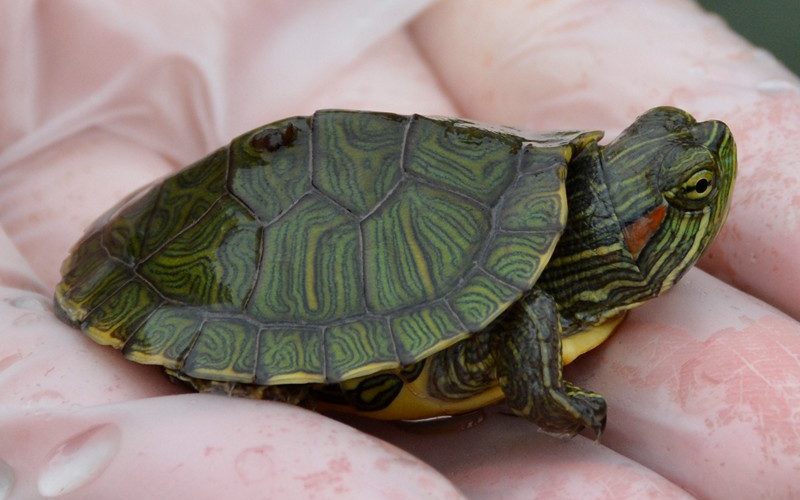Don’t paint them, don’t take them and don’t hurt them
AMANDA BANCROFT
Making Ripples
World Turtle Day is May 23, and this is a perfect time to learn about our native wild Arkansas turtles and do what we can to help them. People around the world celebrate this occasion in a variety of ways. Some dress as turtles or just wear green, and many mark the day by learning about turtles and rescuing them when needed.
For example, if you see a turtle traveling across a busy road or parking lot, carry it across in the direction it was facing until you reach a safer location.
Another way we can help turtles is to never remove them from the wild to keep as pets, and if we do have a pet turtle that we can’t keep, surrendering it to a wildlife rehabilitator (for evaluation before release) helps protect the health of wild populations of turtles.
Exotic or sick turtles should not be released into the wild. If you find a wild turtle in distress, contact Joyce Hicks, licensed wildlife rehabilitator in Bella Vista with the Northwest Arkansas Turtle Rehabilitation Center, at (972) 571-8247.
Pet turtles need sunlight and proper nutrition or else their shells won’t grow properly and can become deformed. Did you know turtle shells are a living part of their bodies? They can feel us touching them and detect pain, so don’t engrave or cut their shells. Painting shells is bad for turtles in many ways: it blocks sunlight which prevents the production of Vitamin D needed for proper growth, the paints may be toxic, and painted shells may not be able to shed scutes as the turtle ages and its shell becomes larger.
The more we know about turtles, the better we can help them. Arkansas is home to 16 species of turtles, and about 11 of these are found in Northwest Arkansas. These include the aquatic common snapping turtle, spiny softshell, eastern musk, Mississippi mud turtle, red-eared slider, eastern river cooter and three kinds of map turtles: Mississippi, Ouachita and northern map. We may also encounter the ornate and three-toed box turtles, our only two terrestrial species.

Wildlife rehabilitator Joyce Hicks of Bella Vista holds a hatchling red-eared slider before its release into a pond. These colorful young turtles turn darker as they age.
(The Free Weekly/Amanda Bancroft)
Some fun facts about our local terrapins:
According to herpetologist Kory Roberts, the smallest turtle in the USA is the bog turtle, and the smallest in Arkansas is the mud turtle — although musk turtles are among the smallest, too!
Musk turtles (also called stinkpots) can emit a foul-smelling odor released from glands on their plastron, the bottom half of their shells.
The beautifully patterned ornate box turtle is rare due to many factors including the pet trade and the fragmentation of its prairie habitat. It is illegal to remove an ornate box turtle from the wild or possess one.
Alligator snapping turtles are rare and mostly found outside of Northwest Arkansas. If you see a snapper, it’s probably a Common Snapping Turtle. They are omnivores, and their diet includes carrion and algae, which keeps ponds and waterways clean.
Box turtles are so named because they can pull their extremities in and close the front and rear halves of their shells to better protect themselves.
Map turtles also get their name from their appearance. The patterns on their carapace (top half of their shells) resemble a topographic map, but this can fade with age.
Amanda Bancroft is a writer, artist, and naturalist living in an off-grid tiny house on Kessler Mountain. She and her husband Ryan blog about their adventures and offer tips to those wanting to make a difference at www.RipplesBlog.org.










